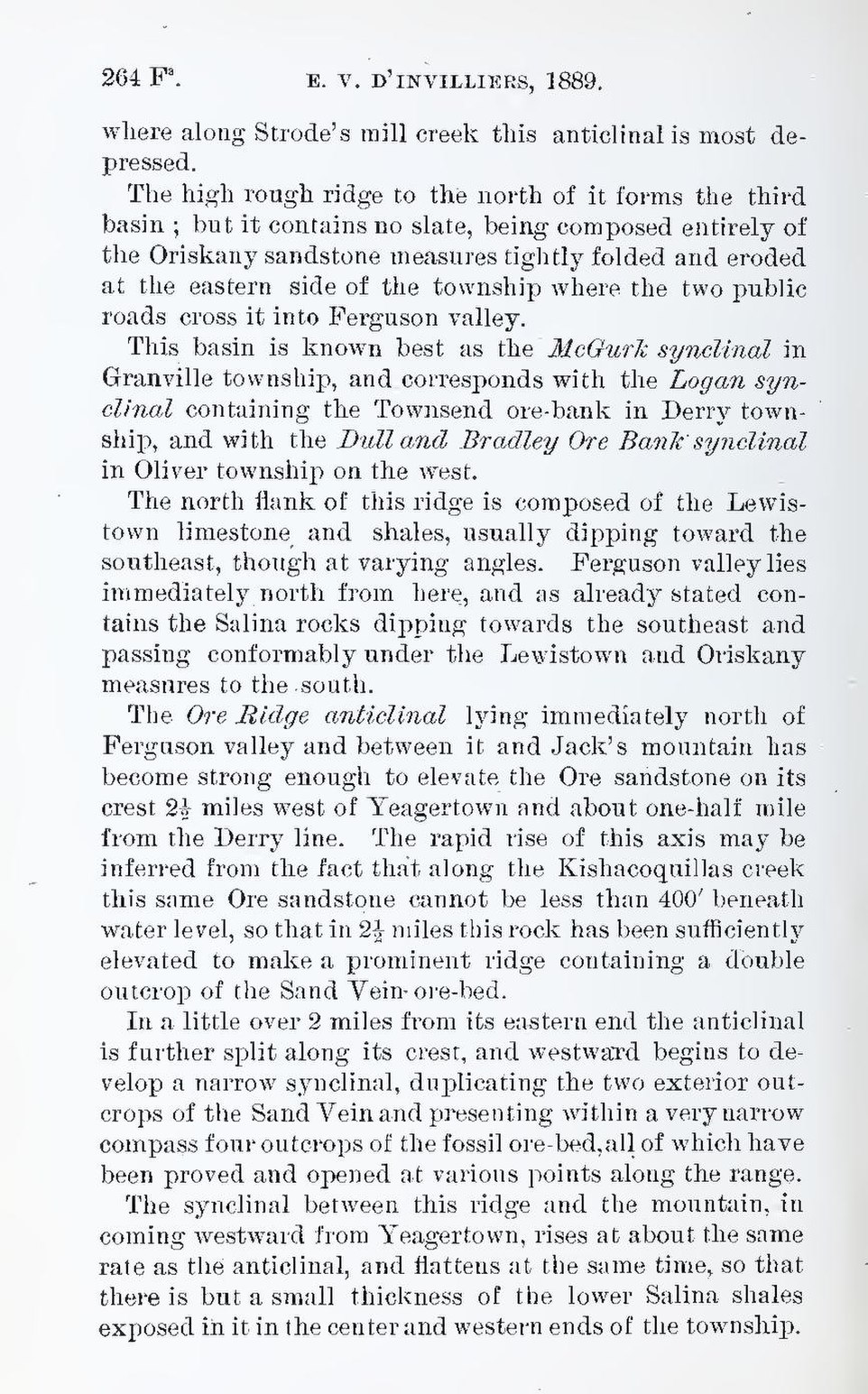where along Strode’s mill creek this anticlinal is most depressed.
The high rough ridge to the north of it forms the third basin; but it contains no slate, being composed entirely of the Oriskany sandstone measures tightly folded and eroded at the eastern side of the township where the two public roads cross it into Ferguson valley.
This basin is known best as the McGurk synclinal in Granville township, and corresponds with the Logan synclinal containing the Townsend ore-bank in Derry township, and with the Dull and Bradley Ore Bank synclinal in Oliver township on the west.
The north flank of this ridge is composed of the Lewistown limestone and shales, usually dipping toward the southeast, though at varying angles. Ferguson valley lies immediately north from here, and as already stated contains the Salina rocks dipping towards the southeast and passing conformably under the Lewistown and Oriskany measures to the south.
The Ore Ridge anticlinal lying immediately north of Ferguson valley and between it and Jack’s mountain has become strong enough to elevate the Ore sandstone on its crest 2½ miles west of Yeagertown and about one-half mile from the Derry line. The rapid rise of this axis may be inferred from the fact that along the Kishacoquillas creek this same Ore sandstone cannot be less than 400′ beneath water level, so that in 2½ miles this rock has been sufficiently elevated to make a prominent ridge containing a double outcrop of the Sand Vein ore-bed.
In a little over 2 miles from its eastern end the anticlinal is further split along its crest, and westward begins to develop a narrow synclinal, duplicating the two exterior outcrops of the Sand Vein and presenting within a very narrow compass four outcrops of the fossil ore-bed, all of which have been proved and opened at various points along the range.
The synclinal between this ridge and the mountain, in coming westward from Yeagertown, rises at about the same rate as the anticlinal, and flattens at the same time, so that there is but a small thickness of the lower Salina shales exposed in it in the center and western ends of the township.
